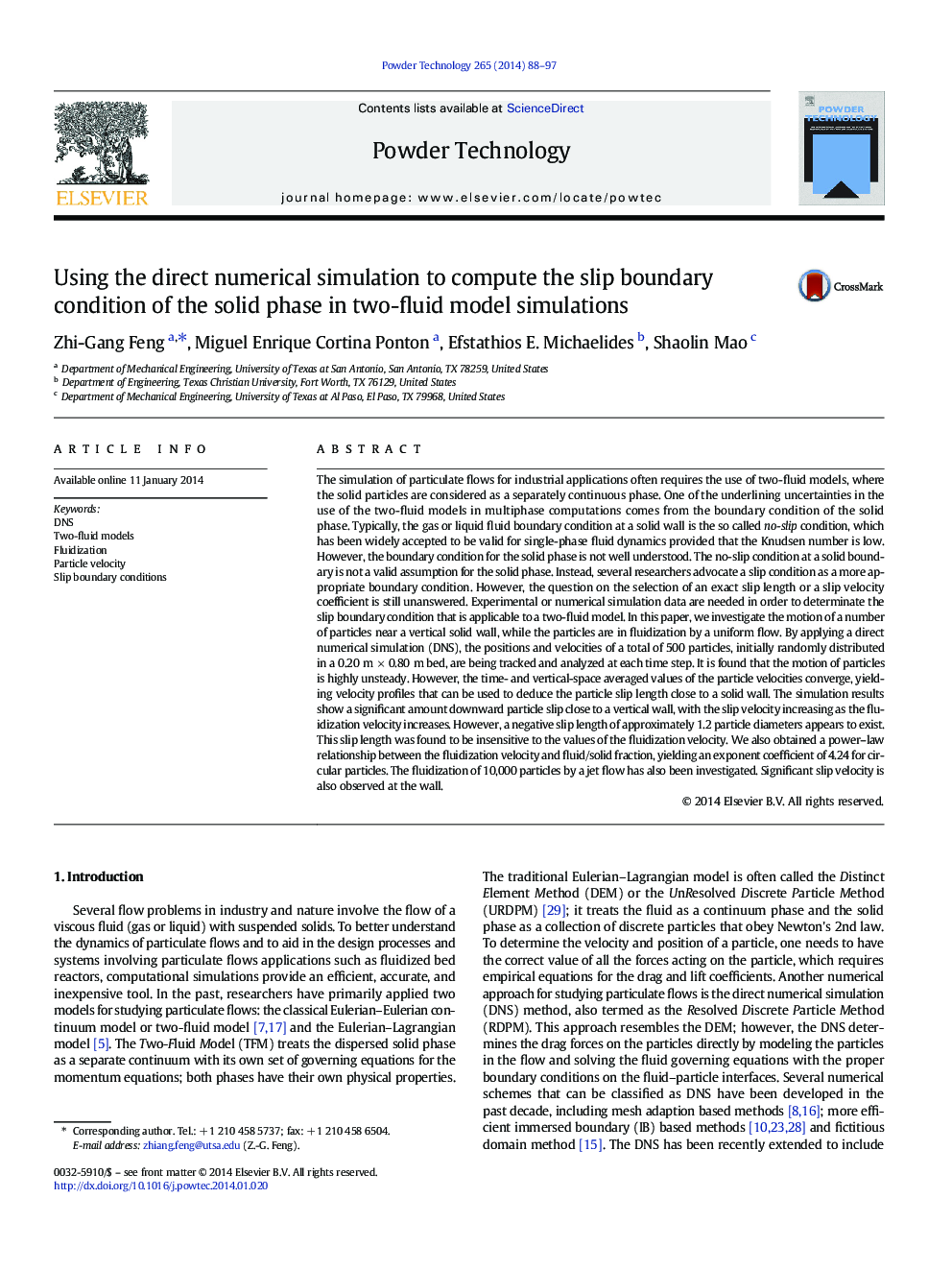| Article ID | Journal | Published Year | Pages | File Type |
|---|---|---|---|---|
| 235989 | Powder Technology | 2014 | 10 Pages |
The simulation of particulate flows for industrial applications often requires the use of two-fluid models, where the solid particles are considered as a separately continuous phase. One of the underlining uncertainties in the use of the two-fluid models in multiphase computations comes from the boundary condition of the solid phase. Typically, the gas or liquid fluid boundary condition at a solid wall is the so called no-slip condition, which has been widely accepted to be valid for single-phase fluid dynamics provided that the Knudsen number is low. However, the boundary condition for the solid phase is not well understood. The no-slip condition at a solid boundary is not a valid assumption for the solid phase. Instead, several researchers advocate a slip condition as a more appropriate boundary condition. However, the question on the selection of an exact slip length or a slip velocity coefficient is still unanswered. Experimental or numerical simulation data are needed in order to determinate the slip boundary condition that is applicable to a two-fluid model. In this paper, we investigate the motion of a number of particles near a vertical solid wall, while the particles are in fluidization by a uniform flow. By applying a direct numerical simulation (DNS), the positions and velocities of a total of 500 particles, initially randomly distributed in a 0.20 m × 0.80 m bed, are being tracked and analyzed at each time step. It is found that the motion of particles is highly unsteady. However, the time- and vertical-space averaged values of the particle velocities converge, yielding velocity profiles that can be used to deduce the particle slip length close to a solid wall. The simulation results show a significant amount downward particle slip close to a vertical wall, with the slip velocity increasing as the fluidization velocity increases. However, a negative slip length of approximately 1.2 particle diameters appears to exist. This slip length was found to be insensitive to the values of the fluidization velocity. We also obtained a power–law relationship between the fluidization velocity and fluid/solid fraction, yielding an exponent coefficient of 4.24 for circular particles. The fluidization of 10,000 particles by a jet flow has also been investigated. Significant slip velocity is also observed at the wall.
